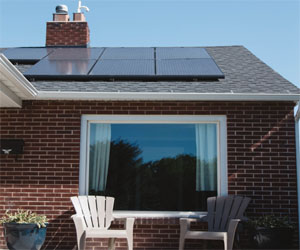


Nurturing Sustainable And Efficient Agriculture
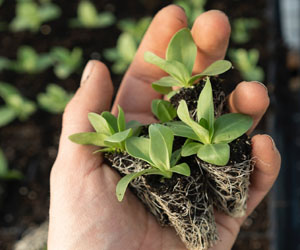
Wicking systems, a type of sub-irrigation, have gained prominence in modern agriculture as an innovative and sustainable approach to water-efficient crop cultivation. These systems offer a host of benefits, including resource conservation, enhanced plant growth, and reduced labor. In this article, we'll explore the world of wicking systems, their working principles, advantages, and applications in agriculture.
The Principle Of Wicking Systems
Wicking systems are a type of passive sub-irrigation method that relies on capillary action to transport water from a reservoir to the root zone of plants. The basic components of a wicking system include a water reservoir, a wicking medium (commonly soil or a soilless mix), and a growing container or bed with a wick that draws water up to the plant's roots.
The key principle behind wicking systems is the movement of water through porous materials, like soil or a specialized wicking fabric, from areas of high water concentration (the reservoir) to areas of lower water concentration (the root zone). This capillary action ensures a consistent and controlled water supply to the plants, making wicking systems highly efficient.
Advantages Of Wicking Systems
Water Efficiency: Wicking systems significantly reduce water wastage by providing moisture directly to the root zone. This targeted irrigation minimizes evaporation and runoff.
Reduced Labor: Once set up, wicking systems require minimal maintenance and are well-suited for urban gardens, container gardening, and raised beds, making them an excellent choice for those with limited time or space.
Improved Plant Health: Consistent moisture levels contribute to healthier and more robust plant growth. These systems help prevent overwatering, which can lead to root rot and other water-related plant diseases.
Drought Resilience: Wicking systems can conserve water and sustain plants during dry spells, making them a valuable tool in regions prone to drought.
Customizable Design: Wicking systems can be adapted to various scales, from small pots to large garden beds and even commercial agriculture, providing flexibility and adaptability to different needs.
Applications In Agriculture
Wicking systems are versatile and can be applied in various agricultural settings:
Home Gardening: Wicking beds and containers are popular choices for home gardeners who want to conserve water and simplify their gardening routines.
Urban Agriculture: In urban settings, where space is limited and water conservation is crucial, wicking systems allow for productive food cultivation on rooftops, balconies, and small courtyards.
Greenhouses: Wicking beds are used in greenhouse agriculture to grow a wide range of crops. They provide precise water delivery, especially for moisture-sensitive plants.
Community Gardens: Wicking systems are employed in community gardens to foster sustainable and inclusive agriculture practices.
Commercial Agriculture: Some commercial farms are adopting wicking systems, particularly in regions with water scarcity, as they help optimize resource utilization and reduce water-related costs.
Wicking systems represent an ingenious solution to address the challenges of water scarcity and the need for sustainable agriculture. By harnessing the power of capillary action, these systems offer efficient water delivery to plants, conserve resources, and promote healthier crop growth. As the world grapples with issues of water conservation and food security, wicking systems are emerging as a valuable tool for both small-scale and large-scale agriculture, contributing to more sustainable and responsible food production.
Illuminating Our Path To Sustainability
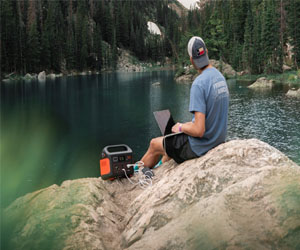 Global Accessibility: Solar energy is accessible virtually everywhere on the planet. As long as there is sunlight, solar panels can be installed and harnessed, making it a democratic energy source.
Global Accessibility: Solar energy is accessible virtually everywhere on the planet. As long as there is sunlight, solar panels can be installed and harnessed, making it a democratic energy source.
Technological Advancements: Ongoing advancements in solar technology continue to drive down costs and improve efficiency, making it increasingly attractive and affordable for individuals, businesses, and governments.
The Role Of Solar Energy In The Future
Transition To Renewable Energy: Solar energy will play a pivotal role in the transition from fossil fuels to renewable energy sources. As our understanding of the urgency of addressing climate change grows, solar power will be an integral part of this shift.
Grid Integration: Future energy systems will be smart and interconnected, with solar power integrated into the grid to ensure a reliable and consistent energy supply. Solar energy, combined with energy storage solutions like batteries, will enable us to use solar power during cloudy days and at night.
The Power Of Gardening Communities
 5. Social Interaction: Gardening is a solitary activity for many, but being part of a gardening community can alleviate the isolation. Whether you're participating in a local club's meetings or engaging in online discussions, these interactions offer the chance to connect with like-minded individuals who share your passion for plants and the outdoors.
5. Social Interaction: Gardening is a solitary activity for many, but being part of a gardening community can alleviate the isolation. Whether you're participating in a local club's meetings or engaging in online discussions, these interactions offer the chance to connect with like-minded individuals who share your passion for plants and the outdoors.
6. Garden Tours And Events: Gardening communities often organize garden tours and events where members can visit one another's gardens, exchange ideas, and celebrate each other's successes. These events can be a source of inspiration and an opportunity to appreciate the beauty of different gardening styles.

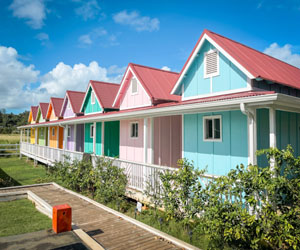

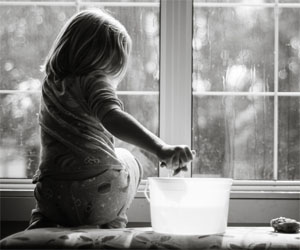
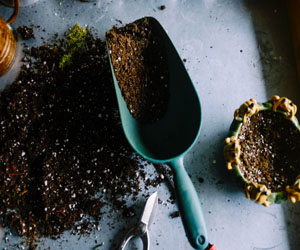

Making The Most Of Your Compact Living
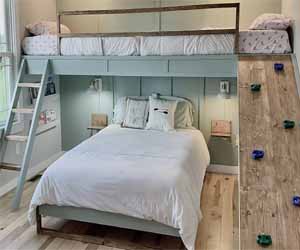 The Benefits Of Small Space Living
The Benefits Of Small Space Living
Before delving into the intricacies of small space planning, it's essential to understand the advantages of choosing a compact living arrangement.
Simplicity: Small homes encourage a minimalist lifestyle, reducing clutter and allowing you to focus on what truly matters.
Eco-Friendly: Smaller homes typically have a smaller environmental impact, as they consume fewer resources for heating, cooling, and maintenance.
Cost-Effective: Compact spaces are generally more affordable, both in terms of initial purchase or rent and ongoing utility costs.
Less Maintenance: With less square footage, there's less space to clean and maintain, freeing up your time for other pursuits.
The Key To Small Space Success: Planning
Small space planning is an art, and it involves thoughtful consideration of every square inch. Here are some crucial factors to keep in mind when planning for your compact living space:
Multi-Functional Furniture: Invest in furniture that serves multiple purposes. For example, a sofa that doubles as a guest bed or a dining table with storage space can help maximize your limited square footage.
Vertical Storage: Make use of vertical space for storage. Wall-mounted shelves, hooks, and cabinets can help keep your belongings organized without encroaching on your floor space.
The Heart Of Gardening Success
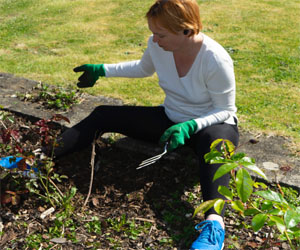 2. Soil Care: Healthy soil is the foundation of strong, vibrant plants. Regularly assess the quality of your garden soil and amend it as needed. Composting, mulching, and using organic matter can improve soil fertility and structure. Understanding your soil's pH and nutrient levels will also help you select plants that are well-suited to your garden's conditions.
2. Soil Care: Healthy soil is the foundation of strong, vibrant plants. Regularly assess the quality of your garden soil and amend it as needed. Composting, mulching, and using organic matter can improve soil fertility and structure. Understanding your soil's pH and nutrient levels will also help you select plants that are well-suited to your garden's conditions.
3. Pruning And Deadheading: Pruning and deadheading are essential maintenance tasks that promote plant health and aesthetic appeal. Pruning involves trimming back overgrown or damaged branches, which encourages new growth and prevents disease. Deadheading is the removal of spent flowers to stimulate further blooms and keep the plant looking tidy.
4. Pest And Disease Management: Keep an eye out for common pests and diseases in your garden. Early detection and appropriate action are essential for preventing infestations. Consider using natural pest control methods to minimize the use of chemicals, which can harm beneficial insects and pollinators.
5. Fertilizing: Plants need nutrients to thrive, and fertilizing can provide a boost when your garden soil is lacking. Select a balanced, slow-release fertilizer and follow the recommended application rates. Over-fertilization can be harmful, so always adhere to the instructions on the product.
6. Mulching: Mulching is a beneficial practice that conserves moisture, suppresses weeds, and regulates soil temperature. Apply a layer of organic mulch around your plants to help maintain soil moisture and prevent temperature extremes.
7. Support And Staking: Tall or heavy plants often require support to prevent them from bending or breaking. Use stakes, cages, or trellises to prop up plants that might otherwise become too top-heavy.
Bringing Sunshine To Your Home
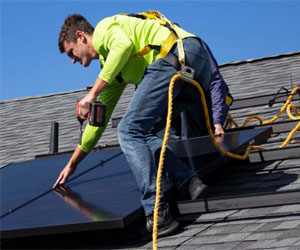 Permitting: Before installation can begin, you'll need to obtain the necessary permits and approvals from local authorities. Your solar installation company can assist you with this process.
Permitting: Before installation can begin, you'll need to obtain the necessary permits and approvals from local authorities. Your solar installation company can assist you with this process.
Installation: The solar panels and associated equipment, such as inverters and racking, are installed on your roof or property. The panels are securely mounted to ensure they can capture the maximum amount of sunlight.
Connection To The Grid: In many cases, residential solar systems are connected to the grid. This allows excess energy to be sent back to the grid in exchange for credits or compensation.
Testing And Inspection: Once the installation is complete, the system is thoroughly tested to ensure it's working correctly. Inspections may also be required to verify compliance with local regulations.
Monitoring And Maintenance: After installation, your solar system will be monitored to track its performance. Routine maintenance, such as cleaning the panels and checking for any issues, will be necessary to keep the system running efficiently.
Benefits Of Solar Installation
Reduced Energy Bills: Solar installation can significantly reduce your electricity bills. By generating your electricity from sunlight, you'll rely less on traditional utility providers.
Environmental Benefits: Solar power is a clean and renewable energy source. It reduces your carbon footprint and helps combat climate change.
Energy Independence: Solar installation provides a degree of energy independence. You're less reliant on the grid, which can be particularly beneficial during power outages.
Increased Property Value: Homes with solar panels are often more attractive to buyers, potentially increasing your property's value.
Embracing Simplicity And Sustainability
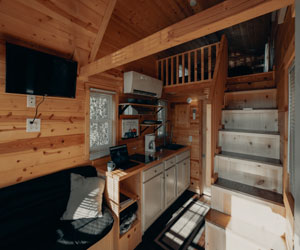 Tiny House Living isn't just about living in small spaces; it's a philosophy that's gaining popularity worldwide. It's a choice to downsize and simplify, allowing individuals and families to lead more intentional lives. The movement is driven by a desire to reduce environmental impact, lower costs, and free up time for what truly matters.
Tiny House Living isn't just about living in small spaces; it's a philosophy that's gaining popularity worldwide. It's a choice to downsize and simplify, allowing individuals and families to lead more intentional lives. The movement is driven by a desire to reduce environmental impact, lower costs, and free up time for what truly matters.
One of the most compelling aspects of the Tiny House Lifestyle is its focus on minimalism. Living in a tiny house necessitates a careful evaluation of one's possessions. This shift towards owning fewer things allows for a clutter-free, stress-free environment. People find themselves no longer burdened by the weight of material possessions but rather liberated to explore other aspects of life.
Maximizing space utilization is at the heart of tiny house design. Every square inch is carefully considered and used efficiently. Multi-functional furniture, built-in storage, and innovative space-saving solutions are key elements of tiny house living. These homes prove that you don't need a massive space to live comfortably; you just need a well-thought-out layout and design.
Reducing the environmental footprint is another driving force behind the Tiny House Lifestyle.